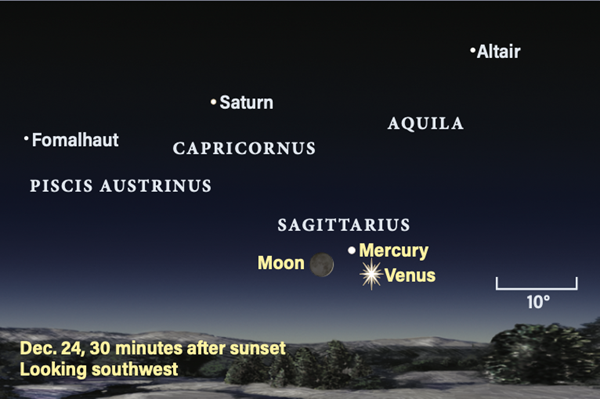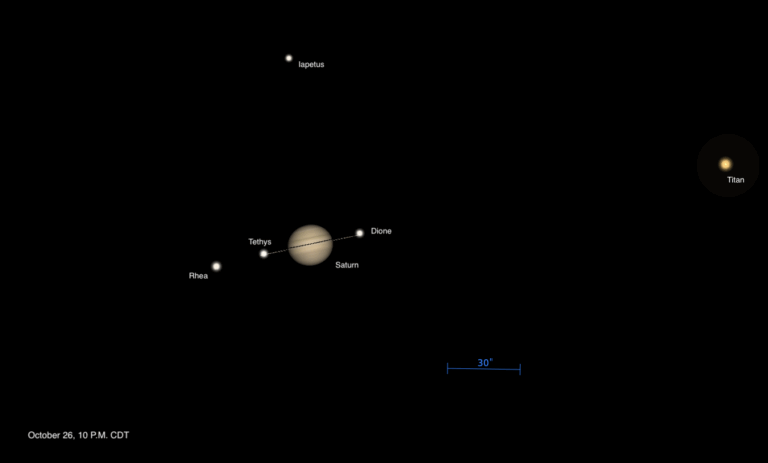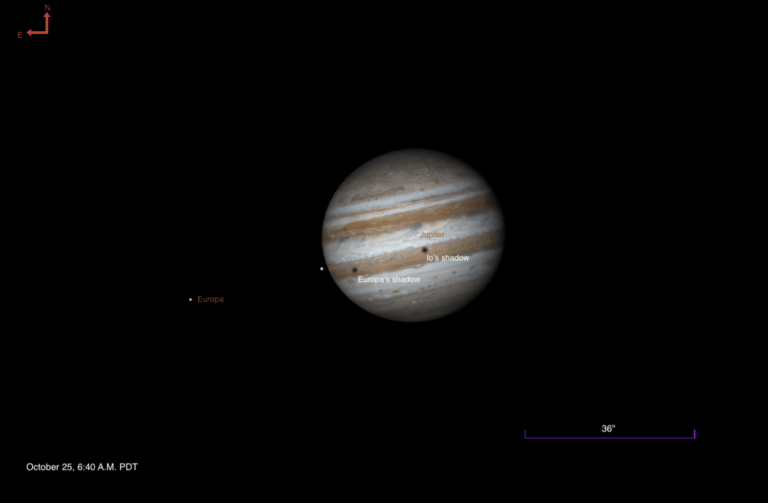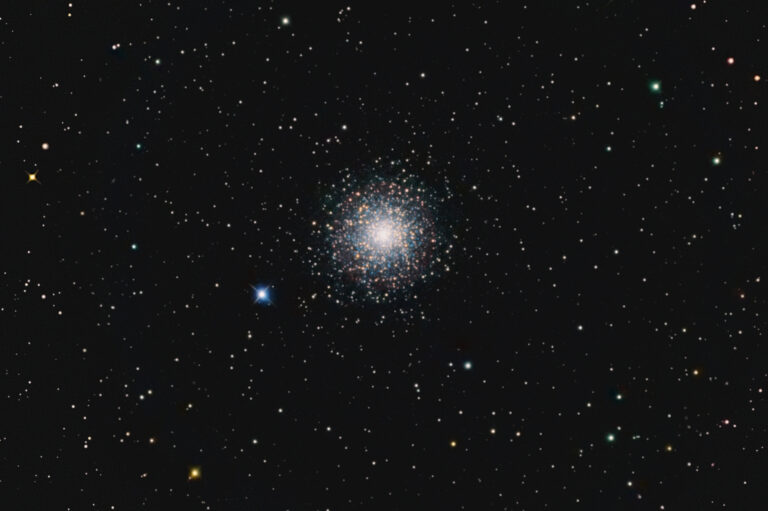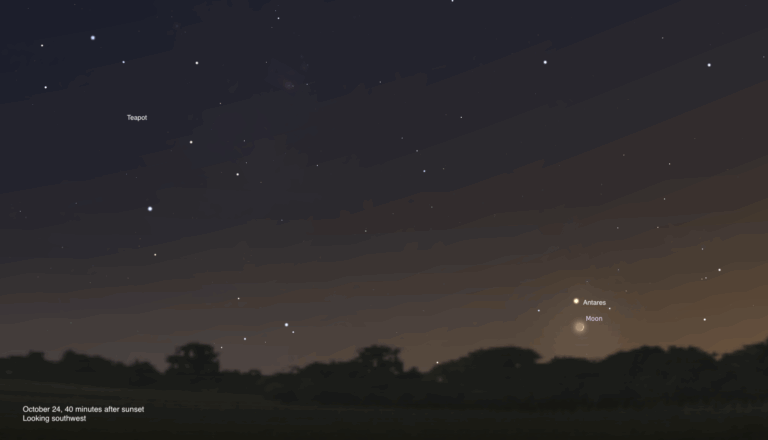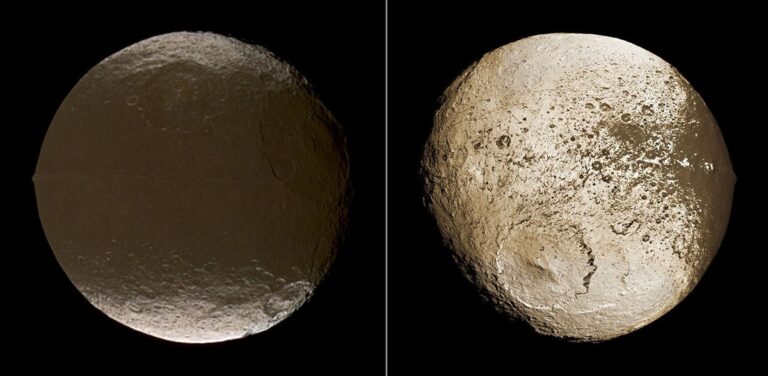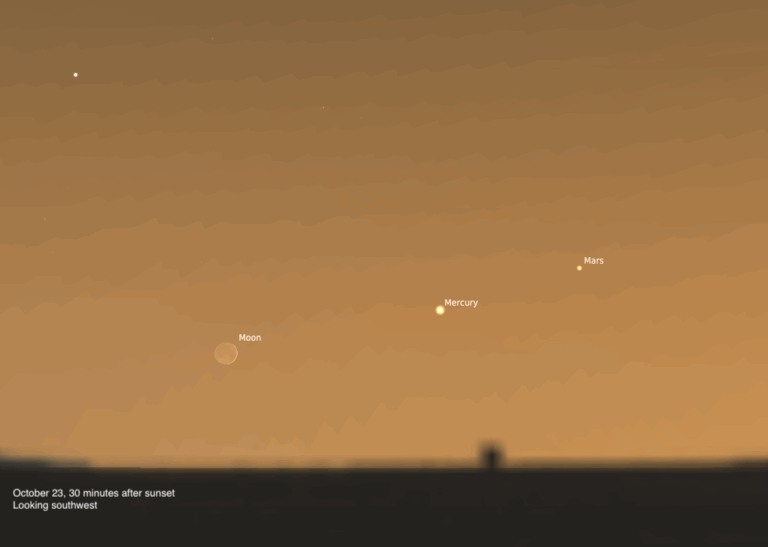Key Takeaways:
This year, Christmas Eve will bring a beautiful sight to the sky shortly after sunset: two bright planets sharing the twilight with a thin crescent Moon.
Look southwest about 30 minutes after sunset and you’ll easily spot bright Venus (magnitude –3.9) about 5° high. Just 4° to its upper left (east) is Mercury, a dimmer magnitude –0.5. And standing to the planets’ left (east) is a delicate crescent Moon just under 4 percent lit, showing off a mere sliver of its eastern limb.
Together, the trio create a triangle in the fading twilight that sets around 6 P.M. local time. There’s no need for binoculars or a telescope to enjoy the show, though if you have observing equipment available, you can compare and contrast the planets’ disks under higher magnification as the sky grows darker. Venus is 10″ across and nearly full, showing off a 97-percent-lit disk. Mercury appears 7″ wide and is just under half lit, its phase at 49 percent. Only these two planets show phases because they lie closer to the Sun than Earth.
Sun and Moon on December 24, 2022
Sunrise: 7:20 A.M.
Sunset: 4:39 P.M.
Moonrise: 8:56 A.M.
Moonset: 6:03 P.M.
Moon Phase: Waxing crescent (3%)
*Times for sunrise, sunset, moonrise, and moonset are given in local time from 40° N 90° W. The Moon’s illumination is given at 12 P.M. local time from the same location.
Venus now sits about 1.62 astronomical units from Earth, while Mercury is 0.92 astronomical units away. (One astronomical unit, or AU, is the average Earth-Sun distance.) Although Mercury orbits closer to the Sun than Venus, thanks to the planets’ current locations in their orbits, Mercury is nearer to Earth right now. Nonetheless, Mercury still looks smaller because it is less than half the diameter of Venus, which is roughly Earth’s size.
Although no one could mistake this particular celestial alignment for a “star,” some historians believe that the Star of Bethlehem, associated with the first Christmas, may have been a similar meeting or conjunction of planets in the sky. And there is one such conjunction coming up: On Wednesday, December 28, Venus and Mercury will stand just 1.5° apart in the evening sky, still readily visible together, while the Moon will have moved on into Aquarius. A few hours later, early on the 29th, Mercury will pass 1.4° due north of Venus, though the two will remain below the horizon then.
Stay tuned to our Sky This Week column for more details on this event and others every day.

